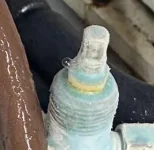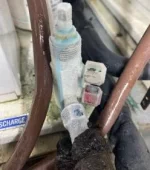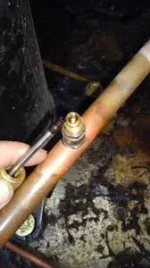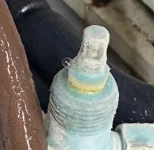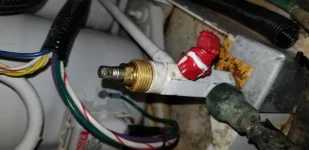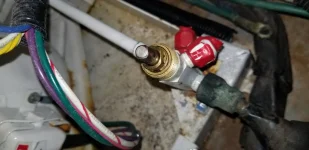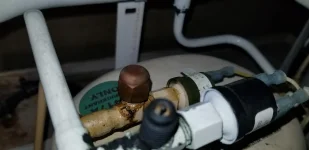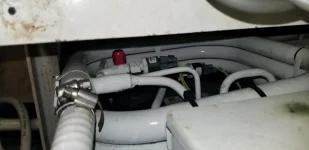Here is a valve... similar on all seven condensers . This unit is low on gas. I guess thats why there is frost on valve.
View attachment 62699
There may be a more correct name, I just call this valve an assembly valve. In a closed position as delivered new, It would hold the pre-charged Freon gas and oil within the condensing station, After installation and the evaporator & lines are drawn down, These valves are opened, Releasing the gas to the evap and enabling the system to run.
Usually, never touched again,,, unless there are no service nipples available from around the compressor. Even then, the low assembly valve would be adjusted because it does not have a schrader valve in its service nipple.
This high pressure side valve has two 1/8" service nipples. The nipple under the red cap has the schrader valve in it. Here you would not need to use the assembly valve to check high pressure.
Look up around the compressor. There may be one or two more of these service nipples. Hopefully under blue & red caps.
Once that valve de-ices, there is a small gland nut at the base of the valve stem. Like an old hose bib, tighten that down to stop your gas leak.

